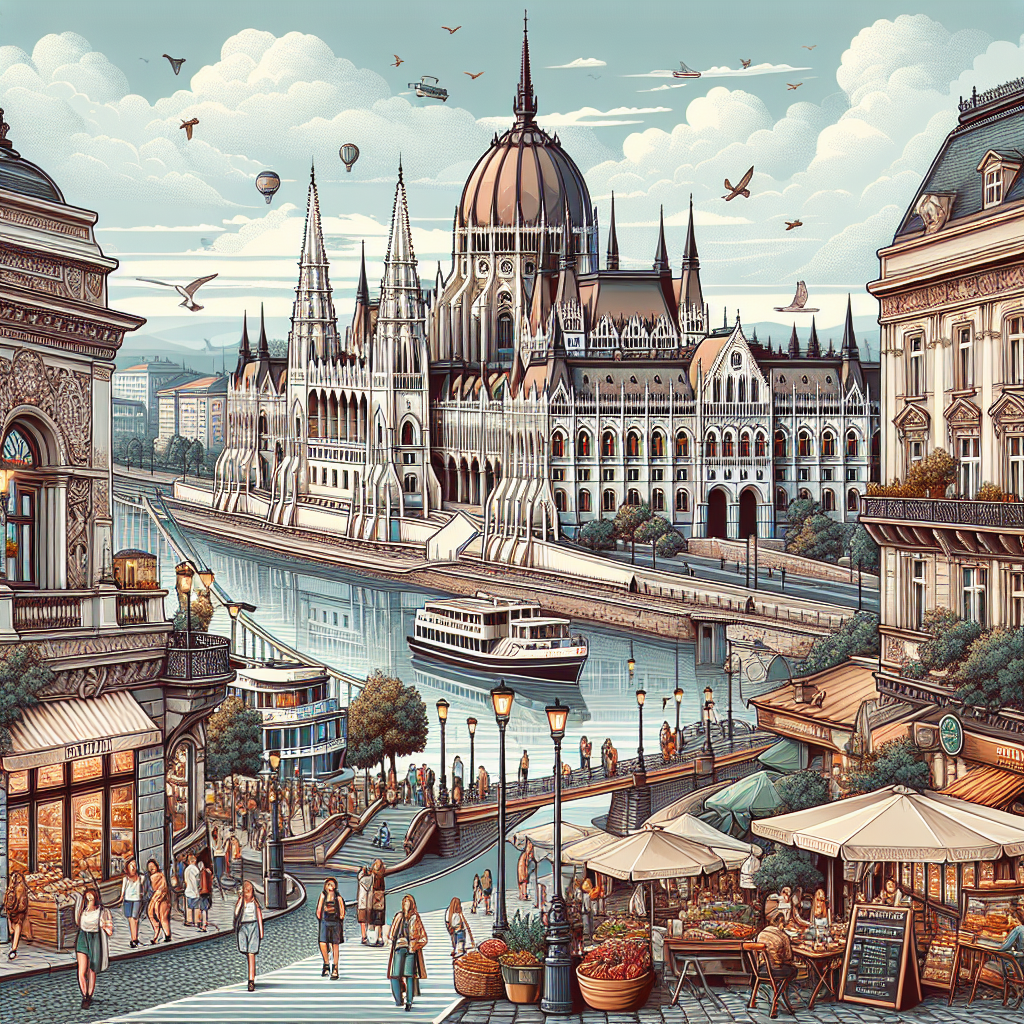Discover Budapest: A Young Traveler’s Guide to Hungary’s Capital
Nestled in the heart of Europe, Budapest, the enchanting capital of Hungary, beckons young travelers with its unique blend of history, culture, and vibrant nightlife. Known as the “Pearl of the Danube,” this city effortlessly combines its fascinating past with a lively present. From the architectural marvels that line its streets to the thermal baths that offer a tranquil retreat, Budapest promises an unforgettable adventure. This guide will navigate through the must-visit spots, hidden gems, and everything in between to help you fully immerse yourself in what Budapest has to offer.
Historical and Cultural Exploration
Budapest’s history is as rich and layered as the city itself. A good starting point is the Buda Castle, a stunning complex offering panoramic views of the city and the Danube. The castle is home to the National Gallery and the Budapest History Museum, perfect for delving into Hungarian art and history.
Cross the iconic Chain Bridge to Pest, and you’ll find yourself in the heart of Hungary’s legislative center, marked by the awe-inspiring Hungarian Parliament Building. Its Gothic Revival architecture is a sight to behold, especially when illuminated at night. Nearby, St. Stephen’s Basilica offers insight into Hungary’s religious heritage and boasts breathtaking city views from its dome.
Art and Culture
Budapest’s cultural scene is buzzing with energy. The city is dotted with numerous theaters, galleries, and museums catering to a wide range of interests. The Hungarian National Museum is a treasure trove of historical artifacts, while the House of Terror Museum provides a gripping look into Hungary’s 20th-century political turmoil. Art enthusiasts will find the Museum of Fine Arts and the contemporary Ludwig Museum irresistible.
For a taste of local creativity, head to the ruin pubs in the Jewish Quarter. These quirky, eclectic bars are set in dilapidated pre-war buildings and are the epicenter of Budapest’s nightlife. Szimpla Kert is the pioneer, offering a unique setting to enjoy a drink and live music.
The Thermal Baths
No visit to Budapest is complete without experiencing its famous thermal baths. The city sits on a geological fault line, resulting in numerous natural hot springs. Széchenyi Bath, one of Europe’s largest spa complexes, is an iconic spot where locals and tourists alike mingle in the outdoor pools regardless of the season. For a more historic experience, the Turkish-era Rudas Baths offer a glimpse into the Ottoman influence on the city.
Gastronomic Delights
Hungarian cuisine is a delightful exploration of flavors, and Budapest is the perfect place to embark on this culinary journey. Traditional dishes such as goulash, paprikash, and langos can be found throughout the city. For an authentic experience, visit the Great Market Hall. This bustling marketplace offers a variety of local foods, spices, and artisanal products. Don’t forget to try Hungary’s world-renowned wines, such as Tokaj, and the unique fruit brandy, Pálinka.
Off the Beaten Path
To truly understand Budapest, venture beyond the tourist spots. The neighborhood of Óbuda, the oldest part of Budapest, offers quaint streets and a slower pace of life. The island of Csepel, in the Danube, is home to industrial relics and contemporary art spaces, providing a unique contrast to the city’s historic sites.
Outdoor Adventures
Budapest’s geographical landscape offers plenty of opportunities for outdoor activities. Hiking in the Buda Hills provides a refreshing break from the city’s hustle and bustle, with trails leading to lookout towers that boast stunning views. The Danube River itself offers kayaking and canoeing experiences, providing a different perspective of the city’s grandeur.
Recreating the Budapest Experience
Bringing the essence of Budapest into your home can be a delightful endeavor. Start by exploring Hungarian cuisine. Cooking traditional dishes such as goulash or making homemade lángos can bring the flavors of Budapest to your kitchen. Cultivate an appreciation for Hungarian wines by organizing a tasting evening, featuring varieties like Tokaj or Egri Bikavér.
Decorate your space with prints of Budapest’s iconic landmarks like the Parliament, the Chain Bridge, or the Fisherman’s Bastion. Incorporate elements of Hungarian folk art into your décor for an authentic touch. Listening to traditional Hungarian music or films set in Budapest can also evoke the city’s atmosphere and provide cultural insights.
FAQ
Q: What is the best time to visit Budapest?
A: Spring (March to May) and fall (September to November) are ideal, offering mild weather and fewer crowds.
Q: Is Budapest expensive for travelers?
A: Budapest is generally more affordable than many other European capitals. However, prices can vary depending on lifestyle choices and travel habits.
Q: Are there any language barriers?
A: While Hungarian is the official language, many people in Budapest, especially the younger generation and those working in tourism, speak English.
Q: What is the currency in Hungary?
A: Hungary uses the Hungarian Forint (HUF). Many places accept Euros, but it’s advisable to have Forints for smaller purchases.
Q: How do I get around Budapest?
A: Budapest has an efficient and affordable public transportation system, including metros, trams, and buses. Walking and cycling are also great ways to explore the city.
Budapest, with its rich history, vibrant culture, and welcoming atmosphere, offers an unparalleled experience for the young traveler. Whether you’re soaking in a thermal bath, enjoying a night out in a ruin pub, or exploring the city’s historical treasures, Budapest is sure to enchant and inspire. By integrating elements of your travels into your daily life, you can keep the spirit of Budapest alive long after your journey ends.
